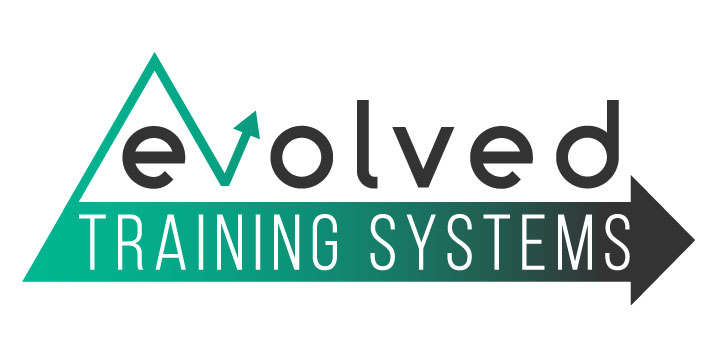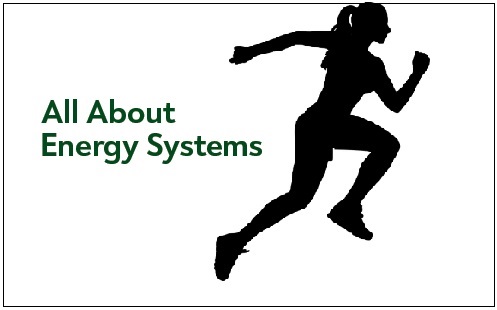This will be a running blog where we’ll delve into something that is near and dear to my heart – PROGRAMMING! Just a brief “manual” of sorts defining the types of workouts we are doing, and some of the dorky science behind it. I will also briefly cover how you should approach some of these workouts in the daily gym programming.
For ease of understanding, we’re going to separate these workouts into sub-categories:
1. Anaerobic – An Anaerobic workout is one in which the work period is LESS THAN the rest period.
- On the most extreme end of “anaerobic” we have “Alactic Anaerobic.” It won’t do much good for me to break this down into further sub-categories (which do exist, BTW), but just be aware that this type of work requires WAY MORE rest than you are used to taking (and requires more rest than what I could feasibly program into an hour long class). Think about running 50m @ 100% effort. The level of output is so high, that it would be impossible to replicate the same intensity level without sufficient rest. We can define this type of work as being 5-20 seconds in length, and being at 100% intensity. Therefore, if performing Alactic Anaerobic work, you will need to take 10-15 times the rest. Example: If you work for 10 seconds, you will need to rest for 100-150 seconds. An athlete training this energy system would generally do 12-20 sets of this. If you are ever bored on a Sunday, just dreaming about crushing WODS at CFPB, stroll yourself over to a track or a football field, and do some Alactic Intervals, as described.
- As we continue to move down the chain of anaerobic work, we find ourselves in the realm of “Anaerobic Lactic Power.” As we continue to move through the different anaerobic systems, you will notice that we are progressively becoming more “aerobic.” The rest periods decrease while the work periods increase. In the Lactic power domain, the work is generally 30-60 seconds in length while the rest is 5-10 times the work. Some of this may look familiar to you guys. We have worked within this realm in gym programming. Anyone remember a workout a few weeks ago that was AMRAP 30 sec (rest 2:30)? The output level is generally about 90% effort. Keep in mind that it is almost impossible to go 100% for 30 seconds. It may feel like 100%, when you’re working out, but that is basically 100% of your 30 sec capacity. It is not a true 100%, like sprinting 50m is. This energy system usually will be worked with approximately 10 intervals.
- The final energy system in the Anaerobic domain is “Lactic Endurance.” This system has a much broader range of work and rest times. It can be anything from 60 sec of work to 240 sec of work (4 min). Regardless, the rest time should be 3-6 times the work. So, if we work for 60 seconds, we would want to rest for 3-6 minutes. We will generally perform 3-5 intervals. The most applicable example for gym programming, would be to perform 90 seconds of work followed by 4:30 of rest, and to repeat 5 times (total of 30 minutes). As we move down the chain of anaerobic work, and see it becoming more aerobic, the intensity level must drop. It would be impossible to try and train for 90 seconds at 90% intensity, and then expect to be able to replicate this multiple times. Therefore, our bodies develop a realistic perspective on how to approach this; and we begin to understand that we must lower the output level to ensure that we can recover sufficiently enough to sustain the work required.
This covers the main categories of the Anaerobic system. As I mentioned in the alactic section, it is impossible to program these workouts into a “WOD” form in gym programming. However, you should be aware that alactic work can be anything. It is not relegated to just “conditioning.” The alactic category is defined as 5-20 seconds of work with 10-15 times rest. What do you think we are doing when we do strength training on Mon, Wed and Fridays? A set of 4 back squats or power cleans takes about 10-15 seconds, and then you will rest for 2-3 minutes… you are doing Alactic Anaerobic work.
Think of this blog as one long article that is being released in sections. In the next post, I am going to discuss the Aerobic system. This is the most familiar to you all, and the one that we work in for 80% of the WODS at CFPB. I will talk about pacing within the aerobic realm and how to progress through aerobic training intervals to ensure you are getting the most out of it. If you have any questions about the Anaerobic, feel free to ask away….
Bryan
In part 1 of the article, I discussed the Anaerobic system. I mentioned that anaerobic training is easily identified by the rest period being longer than the working period. In contrast, Aerobic work is defined by the rest period being shorter than the work period. There are a multitude of different approaches that we can take to Aerobic work. I will discuss these in the sections below.
Aerobic Endurance Testing – This is aerobic work in its most basic nature. Before I define this, I want you to take note of the word “testing.” This is generally not pursued as an avenue of “training.” It is used almost exclusively as a form of “testing,” to determine how effective the training has been. Aerobic Endurance testing is usually 40-60 minutes in length, consisting of constant “sustainable” movement. An example would be to run or row a 10K – Or, if you’re a Games level athlete, maybe rowing a half marathon. Anders and Jenn (and a few others) decided to accept this challenge last July. Not sure how many of them will be repeating this as an annual test. Regardless, the goal here is to TEST, and it is not something that should be done on a regular basis. This type of output will create deep inroads into our CNS (central nervous system), and creates an extremely high level of fatigue that will negatively impact training for days to come.
Therefore, we will use the following mechanisms as TRAINING tools to peak the aerobic system for the ultimate goal, whatever that might be. For most of you, the goal is to perform your best on the long 20 min AMRAP in the Open every March. Very few of you will ever need to workout for any longer than 20 minutes at a high level of constant output.
In the outline below, I will use the acronym “MAP,” which stands for the pursuit of “Maximum Aerobic Power.” It is important to understand that the goal of all MAP work is to work at a SUSTAINABLE, CONSISTENT and REPEATABLE pace. All of the MAP sequences will have multiple intervals. Your goal, as an athlete, is to learn what your own individual level of fatigue will be, for each sequence, and then be able to ascertain how hard you can work, while still being able to repeat the same level of output in the subsequent intervals. All of this will build an understanding within yourself of how to pace during Aerobic TESTING workouts so that you can work equally hard in the first 3 minutes as you do in the grueling final 3 minutes.
- MAP7 – 10 min of work, 5 min rest, repeat 10 min of work. This is the MOST aerobic of the MAP sequences. At some level, there is an inherent need for pacing, even within each 10 min frame. This is a learned skill, and one which will come with time, as you continue to work within MAP training. A simple example of this would be to do 10 min of Rowing for meters, rest 5 min, and then try and repeat the same level of output during the second 10 minute period. In a more complex example, we can do this with mixed modal training, too. When performing MAP work with mixed modal training, it is important that we choose movements that will not cause any substantial muscle fatigue. We do not want the limiting factor to be muscle fatigue. Instead, we want it to be cardiovascular. Which workout would be more catered to MAP work:
- AMRAP 10 – 5 pull-ups, 10 front squats (95/65 lbs), 15 Burpees
- AMRAP 10 – 5 muscle-ups, 10 squat snatches (165/110), 15 HSPU
If you were paying attention, you would know that workout 2 is subject to substantial muscle fatigue and technical failure. Workout 1 would allow the athlete continuous movement, and would much more accurately portray proper MAP training. There is definitely a place in training for workout 2, it’s just not in MAP work. We will discuss where and when we would use workout 2, in future posts.
- MAP6 – 5 min of work, 2-4 min of rest, for 4 intervals. We are now working for LESS time (the rest is also less), but the interval quantity has doubled. We are still “working” for 20 min, but it’s represented in a different manner. Notice how I used the rest period as “2-3 min.” A good approach would be to move from MAP7 to MAP6 with 4 min rest. Then do a MAP6 workout with 3 min of rest, and subsequently complete MAP6 with 2 min of rest. We are progressively working towards becoming more aerobic by shortening the rest periods, but keeping the work periods consistent.
- MAP5 – 3 min of work, 2-3 min of rest, for 5-6 intervals. Same approach as with MAP6. Complete MAP5 workout with 3 min of rest, and then progress to 2 min rest periods, continuing to become more aerobic.
- MAP4 – 2 min of work, 2 min of rest, for 8-10 intervals
- MAP3 – 90 sec of work, 90 sec of rest, for 12 intervals
- MAP2 – 60 sec of work, 60 sec of rest, for 16 intervals
- MAP1 – 30 sec of work, 30 sec of rest, for 20-24 intervals
There are a few more dorky elements included in this MAP work, such as taking longer rest periods to separate the intervals. For example, in MAP1 work, instead of completing 24 intervals in succession, we would complete 8 intervals, then rest for 5 min, then complete 8 more intervals, rest for 5 min, and then complete the final 8 intervals. This allows for higher output level during the intervals. However, this would just overcomplicate things in your mind, so I intend to leave it as is for your knowledge and understand of MAP work. You can let me handle the additional details…
I hope that this has provided some insight into the aerobic work, and the sequence of MAP training, as it pertains to work:rest ratios and the concept of PACING (sustainable, repeatable efforts over multiple intervals). In the next post, I will discuss how we can use Anaerobic and Aerobic work in coordination to PEAK the body and mind for the purpose of a specific event; or series of events, such as the CrossFit Games OPEN. If you have yet to sign up for the OPEN, what are you waiting for?? We have been training all year so that we can test our fitness. Talk to any of the trainers to ensure that you sign up for the proper team, and let’s show the world how awesome we are with all our enhanced aerobic capacity!
In the next section,
Talk about working from Aerobic to MAP1, and from Alactic to lactic endurance, meeting at Lactic Capacity
- Aerobic
- For Time
- AMRAP
- CP/ATP




